commentary Commentary
Commentary: Why are Chinese officials acting like Internet trolls and entertaining online fights with the US?
A heated exchange of words is unhelpful when the superpowers need each other, especially in view of the economic downturn exacerbated by the pandemic this year, says Yew Chiew Ping.
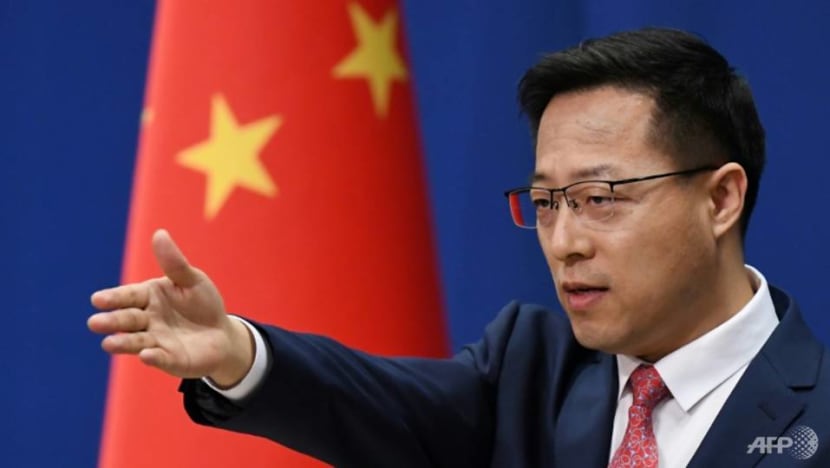
Chinese foreign ministry spokesman Zhao Lijian has raised eyebrows by promoting conspiracy theories that the US army may have brought the virus to China AFP/GREG BAKER
SINGAPORE: As protests over the police killing of George Floyd raged in the US, the chaotic scenes of fire and tear gas called to mind the anti-extradition bill protests in Hong Kong which started a year ago.
China’s pent-up anger at US support of the Hong Kong protests found a release, as its diplomats jumped on the opportunity to conflate the two protests and accuse the US of hypocrisy and double standards.
Chinese Foreign Ministry spokesman Zhao Lijian questioned the US’ reference to those Hong Kong protesters as heroes while labeling American protesters thugs.
In late May, when the US State Department spokesperson Morgan Ortagus tweeted about the US warning against the national security law in Hong Kong, her Chinese counterpart Hua Chunying responded by tweeting “I can’t breathe”, the protest slogan associated with the Black Lives Matter movement.
READ: Commentary: Why George Floyd's death could tilt the US election - in Trump's favour
READ: Commentary: George Floyd's death and the rising spectre of a race-based US election
Commentators have observed that the behaviour of Chinese diplomats on social media is increasingly converging with that of Chinese netizens and trolls, notorious for being touchy, nationalistic, and truculent.
Just as the tactics of Chinese online army often backfired, Chinese diplomats’ taunts were also less efficacious than they were thought to be on open, non-Chinese platforms like Twitter.
Ironically, while Hua’s provocative tweet was meant to expose the US’ hypocrisy, responses to Hua’s tweet suggested China ought to look at its own backyard. Supporters of Hong Kong protestors, for example, posted images of Hong Kongers being manhandled by the police alongside the question “Can Hong Kongers breathe”?
With the two global powers trading barbs over issues including each other’s handling of the COVID-19 pandemic, many are wondering if China and the US are on the brink of a new Cold War.
TIT-FOR-TAT
Taking stock of recent developments, US-China relations do appear to be at a low point with tensions ratcheting up over the past months.
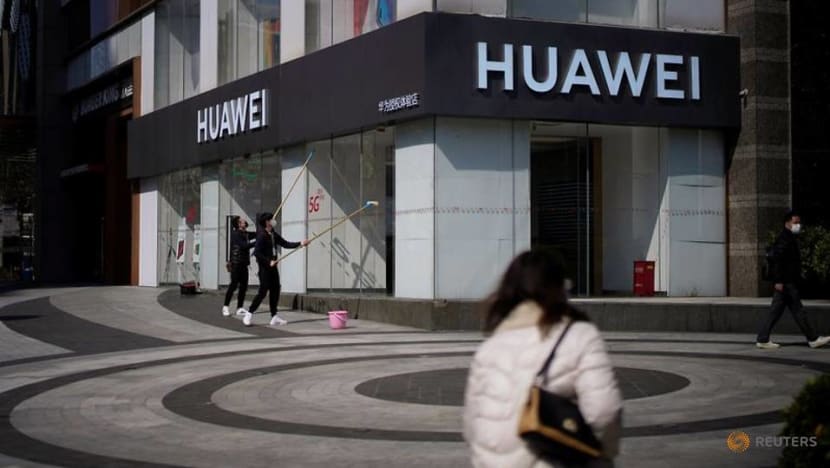
On the trade front, the US announced in mid-May new export controls to block Chinese technology giant Huawei's access to American semiconductor chips. Under new rules, chipmakers using US technology and software cannot ship to Huawei without government permission.
At the same time, US President Donald Trump has also moved to limit US government pension funds from investing in Chinese equities.
In retaliation, China threatened to put US tech companies on an “unreliable entity list”.
READ: Commentary: US-China trade, once the thorn in bilateral ties, could now be the solution
Prior to this, Trump and his administration have doubled up on blaming China for the COVID-19 pandemic. Trump openly used the term "Chinese virus" to describe the coronavirus and his administration has also threatened to seek reparations from China for its alleged cover up of the outbreak.
Then again, the Trump administration may have been retaliating against Chinese Foreign Ministry spokesman Zhao’s tweet in March, which claimed that US Army troops brought the coronavirus to China.
READ: Commentary: What's really behind the China coronavirus cover-up theory
These tit-for-tat moves have even trickled down into civil society. In March, Beijing expelled American journalists at three US newspapers, in response to Washington’s new restrictions on Chinese state media firms in the US.
The US hit back by drastically reducing the number of journalists permitted to work at four key Chinese state-owned media outlets in the US.
In the sphere of education, effective from Jun 1, Chinese students and scholars who have ties to the Chinese military will be barred from entering the US to pursue graduate-level research. Existing visas of Chinese nationals suspected of having military links may also be suspended.
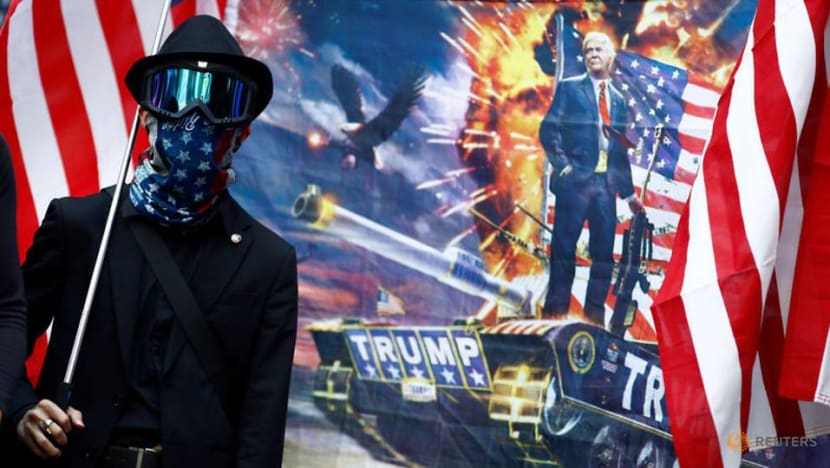
But the latest flashpoint in US-China ties is Hong Kong’s special status under the 1992 US-Hong Kong Policy Act.
In response to Beijing’s decision to legislate the national security law in Hong Kong, Trump in late May revoked Hong Kong’s preferential treatment as a separate customs and travel territory from the rest of China.
Trump’s move could jeopardise Hong Kong’s status as a global business and financial hub.
Sino-US tensions over Hong Kong have long been brewing. Last November, defying China’s repeated warnings, Trump signed into legislation the Hong Kong Human Rights and Democracy Act, which would allow the US to sanction Hong Kong and PRC officials responsible for eroding Hong Kong’s autonomy.
READ: Commentary: The intractable tug of war between China and Hong Kong
READ: Commentary: Autonomy cannot be Hong Kong’s future. Hong Kongers know this
THE TRADE TRUCE
Amid the tit-for-tat between the two great powers, however, the long-drawn trade war has reached a truce. The phase one trade deal agreed by both last December still appears to be in force.
On May 8, Chinese and US officials reaffirmed their phase one trade deal commitments over the phone.
China has already increased its imports of US pork in return for US concessions under the phase one deal.
Both sides reciprocally slashed tariffs in February. China has committed to progressively exempt some US imports from tariffs, the latest being a new list of US commodities excluded from tariffs announced on May 12.
In what may be seen as a move to de-escalate tensions, US Secretary of State Mike Pompeo met with Politburo member Yang Jiechi for top-level talks in Hawaii this week.
READ: Commentary: Why China signed an unequal trade deal with the US
READ: 'Lemon' or not, Trump is stuck with Phase 1 China trade deal
DECOUPLING EASIER SAID THAN DONE
The war of words between the US and China may be more bark than bite, for now at least.
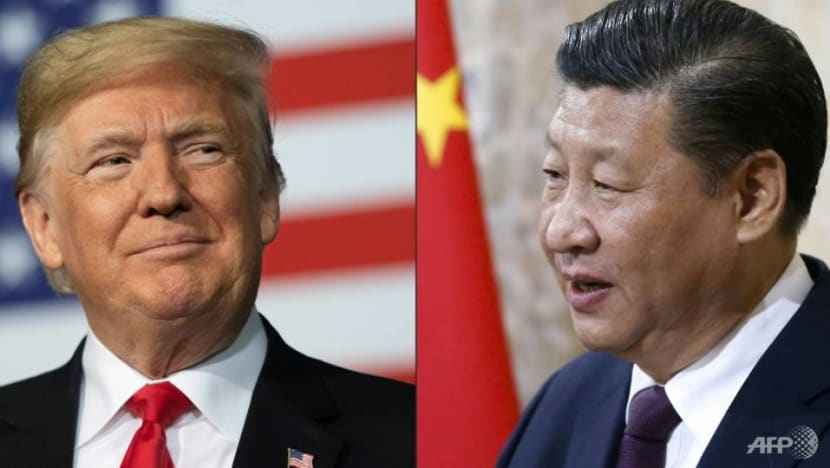
Trump, who is campaigning for re-election this November, told Fox News on May 14 that the US “could cut off the whole relationship” with China.
The President’s macho posturing would resonate with the US domestic audience. A recent Pew Global Survey showed that a record high of two-thirds (66 per cent) of US adults said they had a negative view of China, a 20 per cent jump from the beginning of the Trump administration.
On the Chinese side, the belligerent words of diplomats are also intended for the Chinese more so than the foreigners.
Experts have pointed out how China has a tendency to stoke nationalism to shore up support for the government and deflect attention from domestic woes, even co-opting celebrities to do so. These can be politically expedient moves given rising unemployment and weakening consumer demand at home.
READ: Commentary: Embattled China knows its national priority is the economy
READ: Commentary: Trump and Xi must end the blame game and restore trust
But cutting off the deep and complex connections between the world’s two largest economies is easier said than done.
China is the second-largest US creditor, holding more than US$1 trillion in US debt.
Despite the trade war, the US in 2019 bought more goods from China than from any other country. Trade in services continued to grow but at a slower pace.
In 2019, US direct investment in China increased to US$14 billion.
Migration from China to the US remains robust. Based on mid-2019 estimates by the United Nations Population Division, the US is the top destination for Chinese immigrants, accounting for close to 27 per cent of the more than 12 million Chinese living outside of China.
As of 2018, the Chinese were the third largest group in the 45 million US foreign-born population.
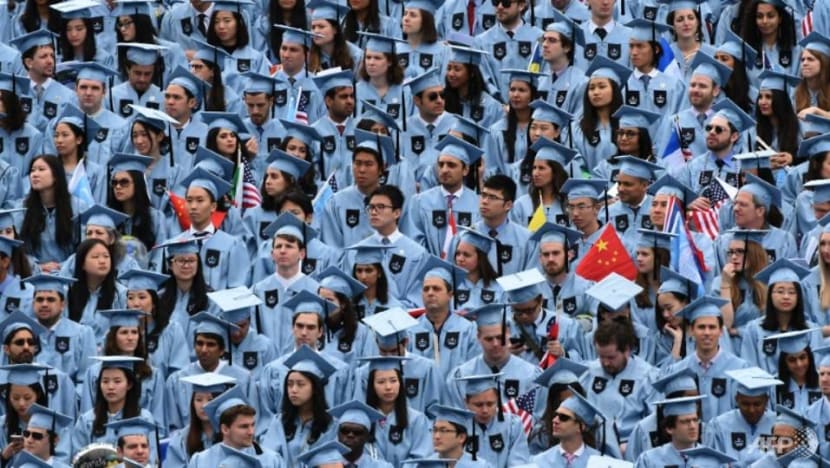
Furthermore, China is the main source of foreign students enrolled in US higher education, and the number of Chinese students has more than trebled over the past decade.
In the 2017 to 2018 academic year alone, 360,000 Chinese students enrolled in the US for studies.
READ: Commentary: We can’t just quit trading with China
The spending power of the Chinese is also a force to reckon with.
In 2018, Chinese visitors spent an average of more than US$11,500 per person in the US, much higher than the combined average of US$2,900 per person from all other countries. Chinese tourists’ spending in the US totalled US$34.6 billion in 2018, accounting for 13.5 per cent of all tourism spending in the US that year.
In 2019, the Chinese remained the top buyers of American homes for the seventh consecutive year, purchasing around US$13.4 billion worth of residential property.
Although the volume had declined from the previous year due to the souring political climate and other reasons, there have been signs that Chinese buyers are returning to the international property market. Global property portal Juwai IQI received 22 per cent more buyer inquiries for US properties in March, compared to the monthly average of 2019.
READ: Commentary: Hopes for a rapid US economic recovery are an illusion
The complex connectedness and interdependence between the two countries at both the state and societal levels mean that today’s US-China bilateral relations, while fraught, are a far cry from that of US and the Soviet Union during the Cold War.
Notwithstanding the verbal sparring and finger pointing, the two global powers are deeply entangled and need each other, especially in view of the economic downturn exacerbated by the pandemic this year.
Dr Yew Chiew Ping is head of Contemporary China Studies at the Singapore University of Social Sciences.












